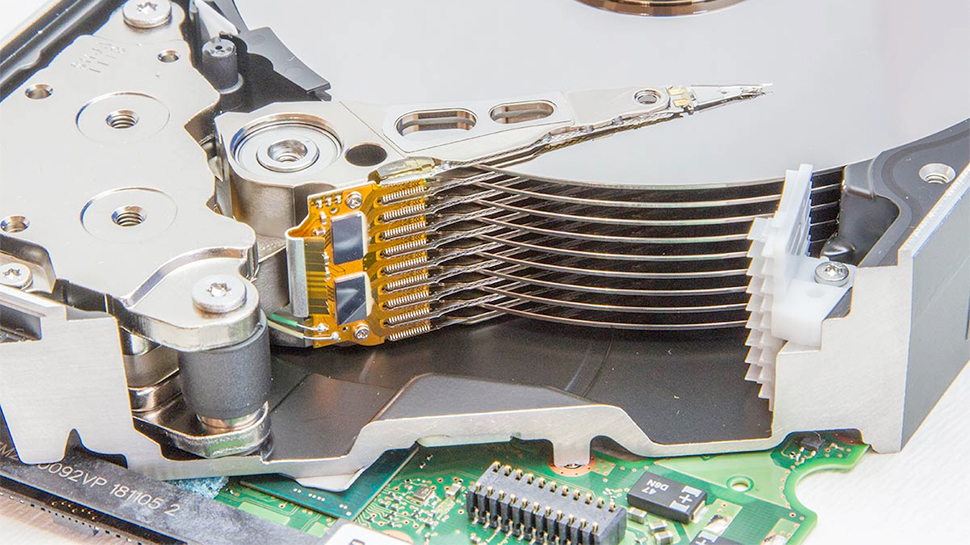HDD Components Maker Hoya Describes 22TB & 24TB Hard Drives

Hoya, a maker of glass substrates for hard drive platters, has revealed some insights regarding plans of HDD makers. The company is confident that demand for glass media hard disk drives will increase no matter which magnetic recording technology HDD producers adopt. Meanwhile, Hoya says that microwave assisted magnetic recording (MAMR) technology will provide limited improvements in recording density.
Competing Technologies
Perpendicular magnetic recording (PMR) technology, which has served the industry for well over a decade, is approaching its physical areal density limits. Technologies like two-dimensional magnetic recording (TDMR) can slightly increase capabilities of PMR without requiring any changes to the software stack of the datacenter. Usage of shingled magnetic recording (SMR) can increase areal density even further, but owners of datacenters must tailor their software for this technology.
To continue using conventional magnetic recording (CMR) methods HDD makers need to adopt various types of energy-assisted magnetic recording technologies (EAMR) that use different kinds of energy to alter coercivity of magnetic disks before recording. Hard drive manufacturers have different opinions about the most viable EAMR technology for today and tomorrow. Seagate is confident that heating the media using laser (HAMR) is the best solution possible, while Toshiba and Western Digital believe that using microwaves to change coercivity of magnetic disks (MAMR) is more viable for the next several years. Furthermore, Western Digital even uses 'halfway-to-MAMR' energy-assisted perpendicular magnetic recording (ePMR) for its latest HDDs. Meanwhile, everyone agrees that HAMR is the best option for the long term.
HAMR requires new heads and immediate transition to glass platters with all-new new coating, whereas MAMR only needs new heads and can continue using aluminum media with a known coating. Even if HAMR offers a higher areal density than MAMR, it is possible to increase platter count to expand the capacity of a MAMR drive to match that of a HAMR-based HDD. There is a catch though: thin MAMR platters will have to rely on a glass substrate.
Hoya: MAMR Is Progressing Slower Than Expected
As a maker of glass substrates, Hoya does not care which magnetic recording technology is used by a particular HDD as long as it uses glass platters. The company says that to build 22 TB and 24 TB drives that are already in the roadmaps of drive makers they need to either use more than nine platters, or adopt HAMR technology.
"For the following 20 TB models, HDD manufacturers are trying to maintain the current layer count without increases," said Eiichiro Ikeda, CTO of Hoya. "However, roadmaps going forward for 22 TB and 24 TB and such show layer increases or adopting HAMR. Development is unchanged here with regard to all customers."
As it turns out, adopters of MAMR are shifting their efforts towards HAMR as microwave assisted recording technology provides limited benefits as far as areal recording density is concerned, according to Hoya.
Get Tom's Hardware's best news and in-depth reviews, straight to your inbox.
"Despite ongoing delays in our customers' HAMR installation timeframes, the MAMR camp is shifting toward HAMR development due to limited improvements expected in recording density, with backup development moving toward more layers," said Ikeda. "Therefore, there is no change in our scenario that glass substrates will be necessary regardless, since to increase HDD capacity, HAMR would be used to improve the recording density, and/or layer count would increase to increase area."
Western Digital started to ship its 20 TB SMR HDDs for revenue just last month, whereas Seagate says it is on track to ship its 20 TB HAMR drives by the end of the year. So far, neither of the companies disclosed when they plan to ship 22 TB or 24 TB HDDs, but some market observers believe that 24 TB drives will be available in 2022.

Anton Shilov is a contributing writer at Tom’s Hardware. Over the past couple of decades, he has covered everything from CPUs and GPUs to supercomputers and from modern process technologies and latest fab tools to high-tech industry trends.